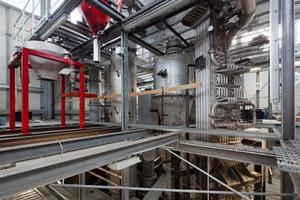EnergyUsing waste heat to capture CO2 before it goes up in smoke
Power plants fired by coal and natural gas account for about half of the CO2 that humans add to the atmosphere each year; these power plants are prime candidates for new technology that captures CO2 before it goes up in smoke. Researchers seek to optimize CO2 removal from power plant emissions by employing waste heat. This is just one example of looking to improve upon a tried-and-true technology for CO2 capture. That technology — a two-phase chemical process — has been used for decades to remove naturally occurring CO2 from natural gas.

Lower-cost carbon dioxide capture using low-pressure 'waste' steam // Source: ison21.es
In some of the first results from a federally funded initiative to find new ways of capturing carbon dioxide (CO2) from coal-fired power plants, Rice University scientists have found that CO2 can be removed more economically using “waste” heat — low-grade steam that cannot be used to produce electricity. The find is significant because capturing CO2 with conventional technology is an energy-intensive process that can consume as much as one-quarter of the high-pressure steam that plants use to produce electricity.
“This is just the first step in our effort to better engineer a process for capturing CO2 from flue gas at power plants,” said George Hirasaki, the lead researcher of Rice’s CO2-capture research team. The researchers hope to reduce the costs of CO2 capture by creating an integrated reaction column that uses waste heat, engineered materials and optimized components. A Rice University release reports that Hirasaki’s team was one of sixteen chosen by the Department of Energy (DOE) in 2011 to develop innovative techniques for reducing greenhouse gas emissions from power plants.
The team’s first findings appear in two new studies that are available online this month in the International Journal of Greenhouse Gas Control.
Power plants fired by coal and natural gas account for about half of the CO2 that humans add to the atmosphere each year; these power plants are prime candidates for new technology that captures CO2 before it goes up in smoke. Each of these plants makes electricity by boiling water to create steam to run electric turbines. Not all steam is equal, however. Some steam has insufficient energy to run a turbine. This is often referred to as “waste” heat, although the term is something of misnomer because low-grade steam is often put to various uses around a plant. Rice’s new study found that in cases where waste is available, it may be used to capture CO2.
Hirasaki, Rice’s A. J. Hartsook Professor of Chemical and Biomolecular Engineering, said employing waste heat is just one example of a number of ways that Rice’s team is looking to improve upon a tried-and-true technology for CO2 capture. That technology — a two-phase chemical process — has been used for decades to remove naturally occurring CO2 from natural gas.
In the first phase of the process, gas is piped upward through a vertical column while an ammonia-like liquid called amine flows down through the column. The liquid amine captures CO2 and
